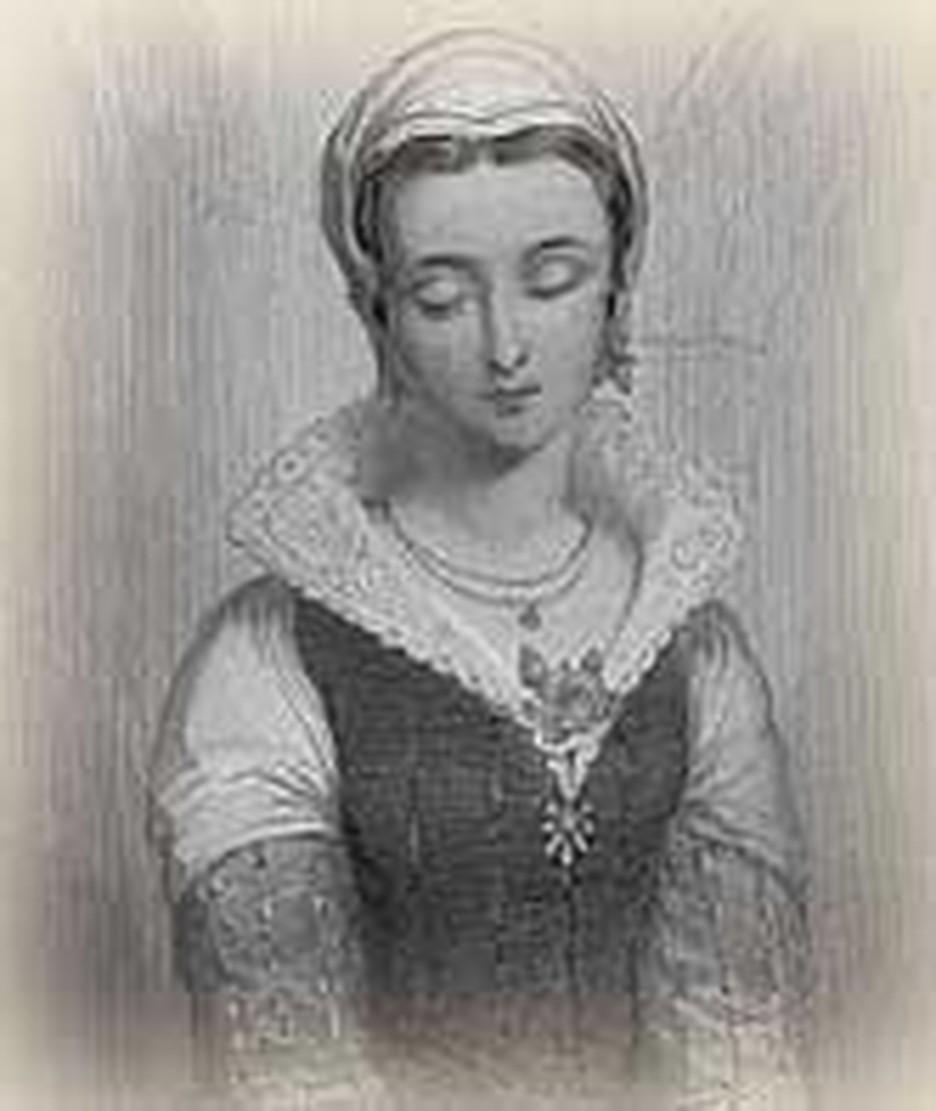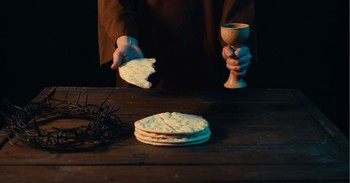
Fifteen-year-old Jane was uneasy. Do I even have a right to the throne? she asked herself. Like everyone in England she knew that her great uncle, King Henry VIII, had willed the crown first to his son Edward (who now was dead) then to his daughter Mary, and lastly to his daughter Elizabeth. This arrangement had the approval of Parliament. And yet, Jane was faced with a page of signatures saying that King Edward had changed Henry's arrangement. Jane was to be queen, he wrote. Yes, his sixteen year old cousin, Lady Jane Grey, with whom he sympathized in ardent Protestant faith. His advisors agreed, although some, like Archbishop Cranmer, did so most reluctantly; but Jane was not told that.
So when her power-mad family announced that she was to be queen, she fell down and wept uncontrollably. "No," she said. Not only did she doubt it was legal, she knew how wretched she would be under the thumbs of the in-laws she detested. The Duke of Northumberland, her father-in-law, was the mastermind behind this plot, and it was not out of love for her he wanted to see her queen; he desired chiefly to protect his own influence.
The arm-twisting of her harsh parents and overbearing father-in-law finally beat down Jane's resistance. "All right," she agreed. But she absolutely refused any suggestion that her husband, the cruel Lord Guildford Dudley, reign with her. What a misery that would be!
Toward evening on this day, the 10th of July, four days after Edward died, Jane proceeded to the Tower of London with a great company of lords and nobles. She was dressed in Tudor green and white. The duchess, her mother, bore the train of her dress.
Jane was proclaimed queen. There was celebration in London. Guns were fired. Heralds proceeded through town with a trumpet blowing, proclaiming Mary Tudor illegitimate.
The proclamation was of no more value than the paper it was written on. The nation hated Northumberland and rallied behind Mary. Nine days later, Mary rode into London and Jane's brief reign ended. She was thrust into prison. No doubt Mary would have spared her cousin had Jane's family stepped quietly aside. But, when Jane's father participated in a rebellion, Jane had to go.
She was brought to the platform where she was to be beheaded. There she declared, "Good people, I am come here to die, and by a law I am condemned to the same." She acknowledged that in consenting to become queen she acted treasonously, but insisted that she never sought the crown. It was forced on her.
She had written to a sister: "Now, as touching my death, rejoice as I do, my dearest sister, that I shall be delivered of this corruption, and put on incorruption; for I am assured that I shall for losing a mortal life win one that is immortal, joyful and everlasting..."
After reciting a psalm in English, her last words before the executioner struck off her head, were: "Lord, into Thy hands I commend my spirit."
Bibliography:
- Bainton, Roland H. Women of the Reformation in France and England. Boston: Beacon Press, 1973.
- Chronicle of Queen Jane and Two Years of Mary. http://tudorhistory.org/primary/janemary/contents.html
- Durant, Will. The Reformation. New York: Simon and Schuster, 1957, especially pp. 586, 587, 593.
- Fuller, Thomas. "The Life of Ladie Jane Grey." The Holy State and the Profane State Volume II. New York: Columbia University Press, 1938, p. 307ff.
- Tudor England, 1485-1603. http://englishhistory.net/tudor.html.
- Various encyclopedia and internet articles.
Last updated June, 2007.


